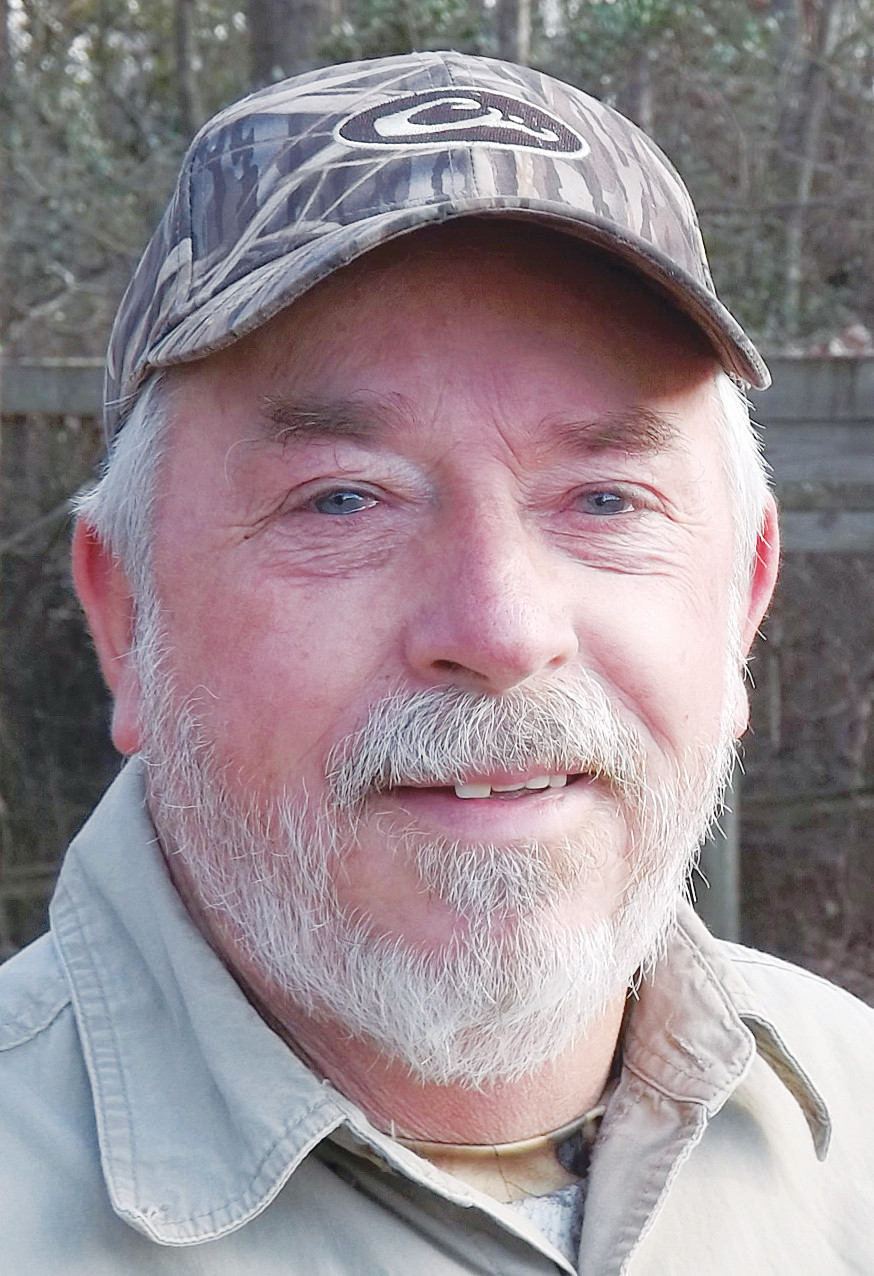A Saturday at the club
I could hear someone speaking to my son Clayton, and when I turned around to look I was surprised to see Mister Thomas. I hadn't heard anyone drive up, and I just assumed it was someone that had walked over from one of the campers on the riverbank. It wasn't.
Thomas Thompson doesn't have a camper at the club, and his truck was nowhere in sight. But here he was, standing out in the driveway behind us.
Clayton had his foot on the bottom step and was holding on to the extension ladder while I reached up to paint the soffit and fascia on the gable end of the generator shed. The club had recently replaced the roof, and I had volunteered to paint the trim. We had been talking and focused on the work at hand and had not seen Mister Thomas walk up behind us. It was a surprise to see him.
We had arrived at our Lowcountry hunt club early Saturday morning. I wanted to take a look at the chufa patches that we had planted a month earlier. There had been several rain showers, and I knew the chufa would be up. I also needed to do a little painting.
I was anxious to see if we had good chufa stands, had any weed problems or if the turkeys were creating a bigger problem in the plots. They had scratched one patch up pretty bad, just a few days after we had planted it, and I was hopeful they hadn't gotten it all.
James Crosby had plowed the sites for us, and we had hand broadcast the chufa seed. James ran the disk back over the seed to cover it at just the right depth. It is a method that we have used many times with good results.
We stopped at the River Road patch first. It flanks the west side of the road and is 600 feet long and 15 feet wide. We were a little disappointed to see that the chufa plants were too widely spaced on one end of the patch and that there was a minor weed problem in another section. I was somewhat puzzled about the spacing but would realize the answer after looking at one of the other plots. We noticed some turkey tracks in the sandy road.
The next plot was on a section of Parler Road. We had planted both sides of the road for about 600 feet. It was beautiful. The spacing was perfect, and there were no weeds. I told Clayton, "This is what a chufa patch should look like." I was very pleased. Parler Road is seldom hunted. Maybe this chufa patch would help change that.
The biggest patch was on Jerry Road, and it's where the turkeys had started scratching up the seed shortly after we had planted the plot. When we turned onto Jerry we saw turkeys in the road ahead. Three big longbeards. They ran around a curve and disappeared into the shady woods.
At the plot, I was relieved to see that we had a decent stand of plants. It wasn't as good as Parler, but it would be good enough. They had stopped scratching up the seeds, and the patch was similar to the section at the end of the River Road plot. That's when I realized that the turkeys had also thinned out one end of the River Road patch.
Chufa is a sedge that looks like a grass. It originated in Africa where it was grown for human consumption. It is grown here mostly for wildlife, specifically for turkeys and waterfowl. The plants produce a cluster of nuts underground. It does good in sandy soil and on new ground.
After surveying the chufa patches, we headed back to the clubhouse, and I was doing a little painting when Mister Thomas walked up.
He told us that he had gotten stuck at the end of New Road and walked back to the clubhouse to see if anyone was around that could pull him out. He went on to say that it was doubtful that another truck could pull him out and that a tractor would probably be needed. I knew the big mudhole he was in and offered to call James Crosby, who lives nearby and has a tractor.
James was just leaving his house and agreed to meet us on New Road. When we rolled up, Mister Thomas' friend Mike Rose was standing to one side in the shade. Mike has had surgery recently and couldn't make the two-mile walk back to the clubhouse. James rolled up right behind us.
The truck was probably 40 feet out in the bog and was bottomed out, meaning that the frame was on the ground. Mister Thomas had three chains that he hooked together and extended to the high ground. James wanted to try pulling it out with his truck first and would go get the tractor if the truck wouldn't do it.
Mister Thomas explained that he had driven through the bog many times, but this time he had slid over into a deeper rut and bottomed out. I have never even tried to drive my truck through that watery guckhole, and I didn't think a truck could pull him out. We would probably need the tractor. But I was wrong. James pulled the chains tight then gave it a violent jerk and pulled the truck right out.
After we got the chains removed, Mister Thomas and Mike got back in the truck, revved the engine and drove it slipping and sliding back through the bog to the other side. I couldn't believe it! James and I just shook our heads and went on our way. I still had some painting to do.
Reach Dan Geddings at cdgeddings@gmail.com.
More Articles to Read


